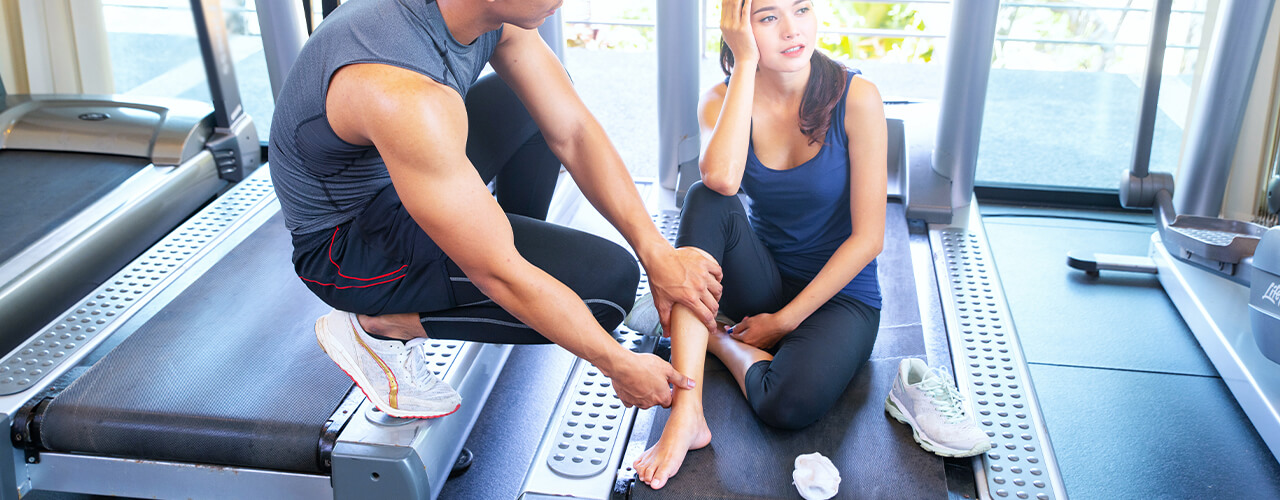How Do You Strengthen Your Neck Muscles?

Neck Strengthening Exercises
The head sags down as the neck and upper back muscles become weakened, and additional tension is put on the cervical spine, which may lead to pain in the neck. Strengthening these muscles can help enhance balance and move the head (with the ears directly over the shoulders) closer to the neutral position.
In combination with strengthening the weaker postural muscles, including the upper thoracic extensors and deep cervical flexors, the scalene muscles (side of the neck) and suboccipital muscles (lower back of the head and top of the neck) are most effectively stretched.
The following exercises to strengthen the neck will help reduce neck pain due to bad posture.
Chin Tuck
The chin tuck exercise is one of the most powerful postural exercises for combating neck pain. This workout helps strengthen the muscles that pull the head back over the shoulders into alignment (upper thoracic extensors) and stretches the muscles of the scalene and suboccipital as well.
It is usually advised that patients stand with the spine up against a door jamb and the legs about 3 inches from the bottom of the door jamb to do the exercise for the first time.
- Push the top back and head backward until the head hits the door jamb, holding the spine against the door jamb. Ensuring that the chin is down so that the head is pulled straight back and not looking up is crucial.
- Hold the head against the door jamb for 5 seconds.
- Repeat this 10 times.
On the side of the neck, a person can feel some stretching of the scalene muscles that go down to the collarbone. These muscles are normally tight muscles, along with the suboccipital muscles at the top of the neck and the base of the skull. Typically, the muscles in the front of the neck and the upper back muscles are the weak muscles that need to be strengthened.
The exercise can finally be performed standing or sitting without a door jamb after initially carrying out the chin tuck exercise in a door jamb and being comfortable with it.
Throughout the day, Chin tucks should be done five to seven times, such as when riding in the car or at the work desk. This exercise’s repetition during the day often helps to build healthy postural habits. When the neck and shoulder blades first begin to hurt, it is extremely necessary to perform this exercise.
In cases of extreme forward head position, when first starting, a person may not be able to bring the head all the way back to the door jamb. It is advisable to move the head back as far as possible without discomfort in these situations.
Prone Cobra
A more sophisticated exercise that strengthens the shoulder girdle muscles as well as the neck and upper back is the prone cobra. This workout is done lying face down on the floor and uses gravity as resistance in the reinforcing process.
- Lying face down, place the forehead on a rolled up hand towel for comfort.
- Place the arms at the side, palms down on the floor.
- Place the tongue on the roof of the mouth (this helps stabilize the muscles in the front of the neck to assist in strengthening).
- Pinch the shoulder blades together and lift the hands off the floor.
- Roll the elbows in, palms out and thumbs up.
- Gently lift the forehead about an inch off the towel keeping the eyes looking straight at the floor (do not tip the head back and look forward).
- Hold the position for 10 seconds.
- Perform 10 repetitions.
It could be difficult, starting out, to hold the position for 10 seconds and repeat 10 times. In which case, the exercise should be completed as much as possible without causing discomfort, and then continued after giving muscles a chance to recover within a few days.
Back Burn
Back burn exercise is another major postural exercise. This exercise is conducted against a wide flat wall with the back and the feet about 4 inches from the bottom of the wall.
- Assume, with the back of the head against the wall, the same posture as the chin tuck exercise.
- Only try flattening your lower back against the wall.
- With wrists about shoulder height, place the elbows, forearms and the backs of the hands and fingers on the wall.
- Slowly slide the hands up above the head and slowly back down, holding the arms , hands, head and fingertips still touching the wall as best as possible.
- Repeat this 10 times, three to five times a day.
In addition to strengthening back muscles, the back burn also helps open up tight chest muscles.
Are You Looking for Relief From Neck Pain?
Pace Physical Therapy in San Jose, California specializes in non-surgical neck pain relief and recovery therapies. We pride ourselves on offering the best possible physical therapy available and going above and beyond for our patients. Our highly experienced physical therapist will work with you to improve your function and relieve your pain. We start by assessing the body as a whole. Oftentimes the cause of pain or an injury extends far beyond just the body part or muscle hurting. Without taking a comprehensive look at your entire self, we would be doing you a disservice in fully helping you heal and preventing future limitations. We then move on to fixing your areas of limitation. Not all diagnoses are created equal. One person with neck pain may have completely different limitations than the next person. Your recovery program needs to be specific to what YOUR body needs and not just the typical exercise program that you can find online. Just because your pain decreases or you can walk longer doesn’t mean that it is enough to get you functioning at the level you want to be. While this often signifies the end of care at your typical PT clinic we don’t stop providing guidance until we help you successfully meet every goal you set for yourself with us on day one. Contact us today to schedule your appointment!
Sponsored by San Francisco website designer Magnified Media.


